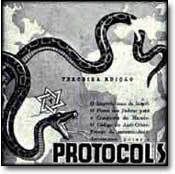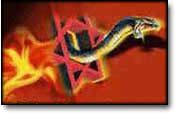Eric P. Kaufmann’s The Rise and Fall of Anglo-America presents the case that Anglo-America committed what one might call “suicide by idea”: White, Anglo-Saxon Protestants were motivated to give up ethnic hegemony by their attachment to Enlightenment ideals of individualism and liberty. Anglo-Americans simply followed these ideals of the Enlightenment to their logical conclusion, with the result that immigration was opened up to all peoples of the world, multiculturalism became the cultural ideal, and Whites willingly allowed themselves to be displaced from their preeminent position among the elites of business, media, politics, and the academic world.
Kaufmann explicitly rejects the proposal that the decline of Anglo-America occurred as a result of some external force. His view is therefore an important contrast to my view that the rise of Jews to elite status in the United States and particular Jewish intellectual and political movements (e.g., the movement to open immigration to all the peoples of the world) were critically necessary (not sufficient) conditions for the collapse of White America. My view is that the outcome was the result of ethnic conflict over the construction of culture. Indeed, the fall of Anglo-Saxon America is a textbook case of how deadly the conflict over the construction of culture can be.
In this review, I will show where Kaufmann goes wrong — mainly by committing sins of omission in ignoring the Jewish role in the decline of Anglo-America. But it must be said that he provides a fascinating historical overview of the decline of Whites in the US. As he notes, it was not very long ago that America strongly asserted that it was a nation of Northwestern Europeans and intended to stay that way. The 1924 Johnson-Reed Act was carefully designed to preserve the ethnic status quo as of 1890, thereby ensuring the dominance of Anglo-Americans. In 1952, the McCarran-Walter Act reiterated the bias toward Northwestern Europe and was passed over President Truman’s veto.
But only a decade later, in the 1960s, White America began the process of ethnic and cultural suicide:
By the 1960s, as if by magic, the centuries-old machinery of WASP America began to stall like the spacecraft of Martian invaders in the contemporary hit film, War of the Worlds. In 1960, the first non-Protestant president was elected. In 1965, the national origins quota regime for immigration was replaced by a “color-blind” system. Meanwhile, Anglo-Protestants faded from the class photos of the economic, political, and cultural elite — their numbers declining rapidly, year upon year, in the universities, boardrooms, cabinets, courts, and legislatures. At the mass level, the cords holding Anglo-Protestant Americans together began to unwind as secular associations and mainline churches lost millions of members while the first truly national, non-WASP cultural icons appeared. (pp. 2–3)
While it is certainly true that other ethnic groups have gone into historical decline or have been replaced by force, the decline of Anglo-America seems mysterious. There are no conquering armies that would easily explain their impending exit from the stage of history.
But despite its obvious importance as an historical phenomenon, as Kaufmann notes, there has been almost no academic attention to the causes of this very precipitous decline. Perhaps some things are better left unsaid, at least until the losers of this revolution are safely relegated to a powerless position. More
![[9_10_s22.jpg]](https://blogger.googleusercontent.com/img/b/R29vZ2xl/AVvXsEjTXnQay9wzz0E6nVHrVhaHKoq_zYXDqZjijHlNDQzj90MZzInrCuVX4ciFYCiBfZ7lhlgr2bBhhnl7ddWbhdih5JbXjQYbA605TNyiq046bQqjG2A4S-nHTmh1VBTQSG6tmc23wq47QQ/s1600/9_10_s22.jpg)




No comments:
Post a Comment